Slide show of pictures: Click here
Badr bin Mughera perhaps never existed.
A white robed upright Andalusian Muslim, played by Yusuf Khan in Gharnata, standing up to the
Christian invaders in face of increasing odds, is still the image which stayed
with me.
The movie, a typical Nasim Hijazi work, is historical fiction. It is
available in youtube in 16 sections. Close to end you realize that you have been taken for a ride. Like 'Inglorious Bastards' it is nothing but wishful thinking. In the movie, the last Muslim
ruler Mohammad Abdullah, played by Aslam Pervaiz as
a flamboyant young man with no clue to run a country, is killed by
his mother for his treachery. Ferdinand, played by the ever-scary Adeeb, is almost fatally wounded, and orders a retreat.
It is otherwise a great movie, released in 1970, starring Talish (as traitor Abu Dawood), Iqbal Hasan, Saqi and Rozina. It was the first movie ofAsia . There are great songs in the voices of Noor Jehan and Mehdi
Hasan (main hoon yahaan, kis naam say pukaroon/raat bhi hay). lyrics Tanvir Naqvi,
It is otherwise a great movie, released in 1970, starring Talish (as traitor Abu Dawood), Iqbal Hasan, Saqi and Rozina. It was the first movie of
What happened was quite different from that.
Mohammad Abullah, known in Spanish folklore as Boabdil, was in endless war with his father for the throne. His father Abdul Hasan, (Muley Hacen) was not the pious king as portrayed in the movie. However, he was the one who decided to stop paying tribute to the Christian Kings. That eventually lead to the ultimate downfall ofGranada
Mohammad Abullah, known in Spanish folklore as Boabdil, was in endless war with his father for the throne. His father Abdul Hasan, (Muley Hacen) was not the pious king as portrayed in the movie. However, he was the one who decided to stop paying tribute to the Christian Kings. That eventually lead to the ultimate downfall of
That did not work, Ayxa was instrumental in bring her son to power. Once he became
the king, Boadbil had a rocky relationship with the Christian Monarchs. He changed his relationship with them so many
times, and reneged enough on his treaties to give Ferdinand and
Isabel a valid ground to invade Granada Alhambra Fez
Strangely there were two powerful families, one behind each of the two
wives of Abdul Hasan. The Abencerrages (saddler’s son, ibn-el-serraj)
supporting Ayxa, and the Venegas, the Christians turned Muslims supporting their
fellow Christian turned Muslim Zorraya. After the fall of Granada North Africa .
Driving up north to Granada Sierra Nevada range, along the river. It is almost like
traveling through its namesake in California Granada
Reminded me of what Boabdil would have thought when he looked back
riding down towards his exile to Alpujjara. He wept at the site and his
mother (whom Hijazi would rather had killed her son) famously said,
Ibka l-yawma bikā'a n-nisā'i ʿalā mulkin lam taḥfuẓhu ḥifẓa r-rijāl
You weep like a
woman for what you could not defend as a man.
ابك اليوم بكاء النساء على ملك لم تحفظه حفظ
الرجال
The lament of Boabdil at that pass earned the name of Moor’s Last
Sigh. (also the title of a book by
Salman Rushdie.)
GRANADA, THE POMEGRANATE:
The word means pomegranate. It was captured in the first year of Muslim invasion in 711. It remained a distantprovince of Al Andalus
The word means pomegranate. It was captured in the first year of Muslim invasion in 711. It remained a distant
THE DEAL:
In the beginning of 13th
century while the Muslim Spain was divided into multiple Taifas (kingdoms) and
after the fateful battle of Las Navas de
Tolosa, Maarrka’ tul Aqab, the
puritanical Almohids started to lose ground. Cordoba Seville Granada Seville Granada Seville Granada
This was considered so big a victory for
This dynasty, Nasirid, claims to be a branch of Banu Khazrij, one
of the two Yasribite tribes who welcomed the Prophet on his migration from Mecca
It took the Catholic kings of Iberia Granada
There can be no doubt that Granada was considered the worthiest
prize for the Catholic Monarchs, Isabel and Ferdinand, that they decided to
move their final resting place from Toledo (where they already had a mausoleum
built for themselves) to Granada. However they chose not to be buried on the
Hill. Their graves are in the Cathedral which is down the hill.
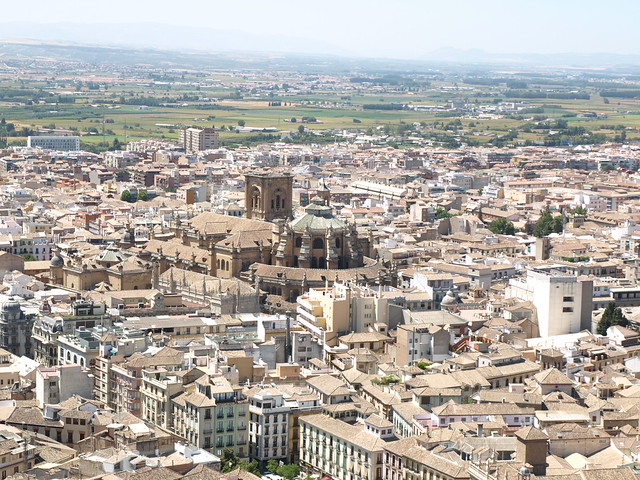
I did not have the chance to go there.
THE HILL:

I did not have the chance to go there.
THE HILL:
In about 200 years after the Muslim rule, there were significant
differences between the people of mixed Arab and Spanish descent ie the Muladis, and the Arabs. In a bloody battle, the Arabs were defeated and sought shelter
on a hill, the Sabikah Hill. A castle was built to secure it, and perhaps the
mud had red hue, it was called Qalatul Hamra. It was ignored for another
century or so. Then it was Ismail bin Naghrela, the Jew to reach the highest
military post in Andalusia , who renovated and rebuilt the city.
The hill has a few other places to visit besides the Alhambra
The Alcabaza
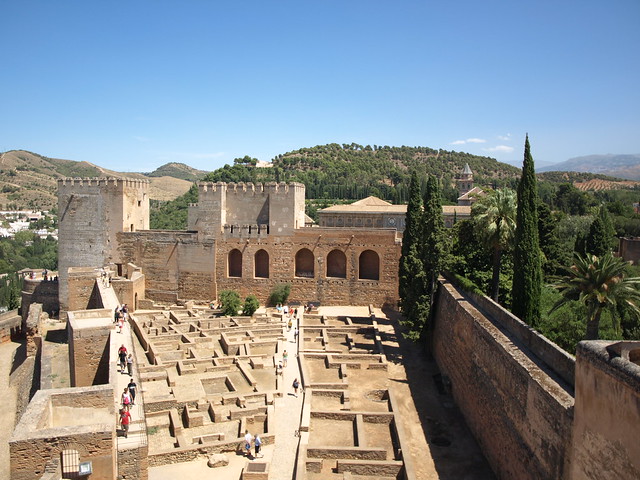
This is the actual Fort. It is one of the two places on the hill which can be seen only once in a day. It offers a breathtaking view of the whole valley, from its tower.Sierra Nevada Mountains

The tower was the place for the administrators to see if the farmers are growing the crops on time and when is the right time to go down and collect the taxes. It was also the place to call the faithful to prayers five times a day. Later the Christians fitted it with theBell

This is the actual Fort. It is one of the two places on the hill which can be seen only once in a day. It offers a breathtaking view of the whole valley, from its tower.

The tower was the place for the administrators to see if the farmers are growing the crops on time and when is the right time to go down and collect the taxes. It was also the place to call the faithful to prayers five times a day. Later the Christians fitted it with the
Then there is in-your-face unfinished palace of the most powerful
man in history in his own time. Charles V, was the son of Ferdinand's and Isabel’s
daughter. His father was the King of France. Pope gave him the title of the Holy Roman Emperor, his dominion included
Spain Italy France Americas Far East . After becoming the King of Spain, he renovated
a room in Alhambra
It is built right where the original entrance was to Alhambra Madrid Charles Palace
There is a Mosque turned church, Mezqutiqa de Sante Maria, which
was closed on the day of our visit.
The Gardens
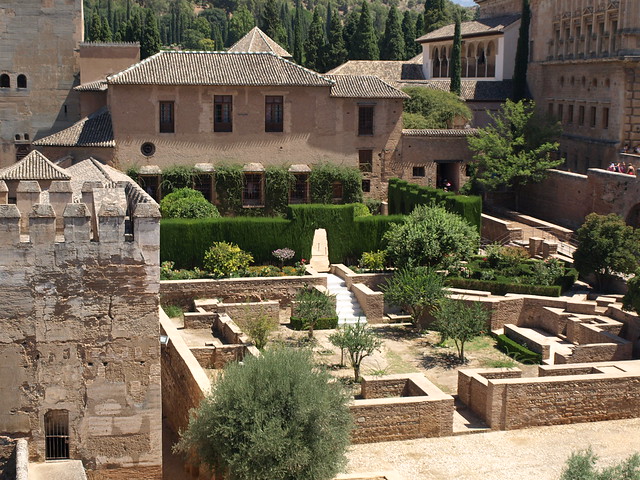

Generalife from Arabic JannatulAreef, are the best place to have the outside view of
Next, the Palacios Nazaries or the Nazarid Palace or Alhambra
----------------------------------------------------------------------------------
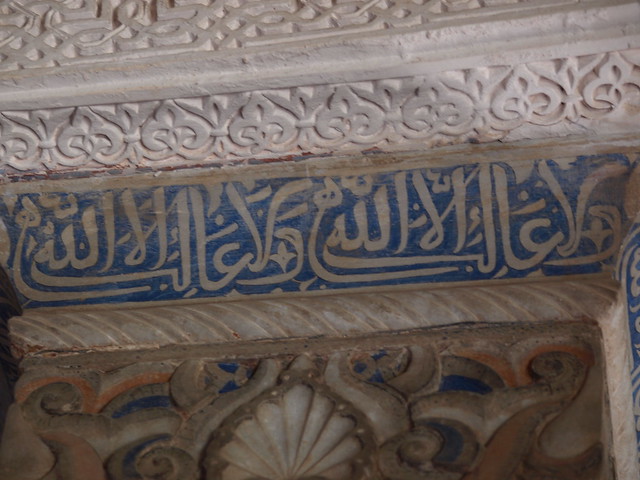
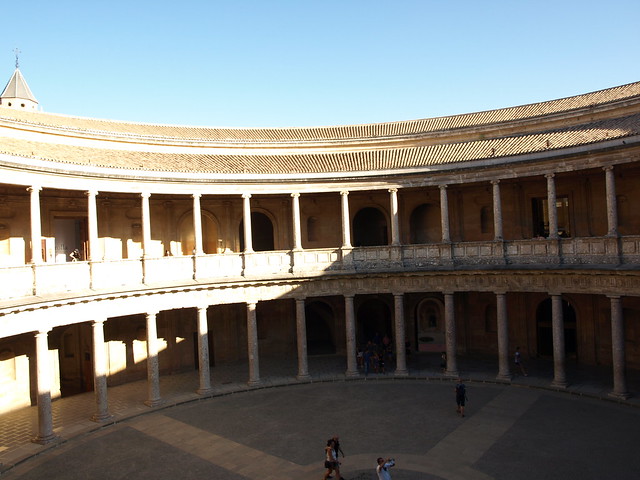
No comments:
Post a Comment